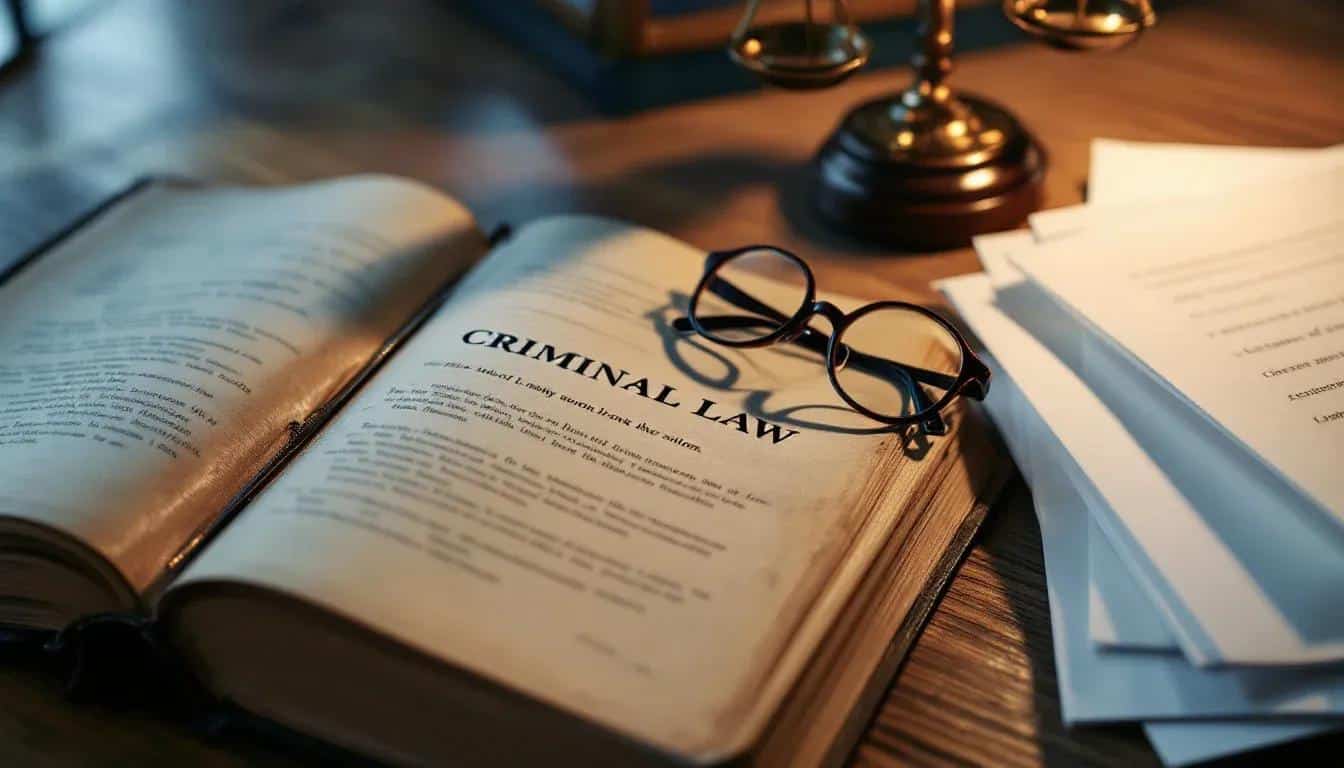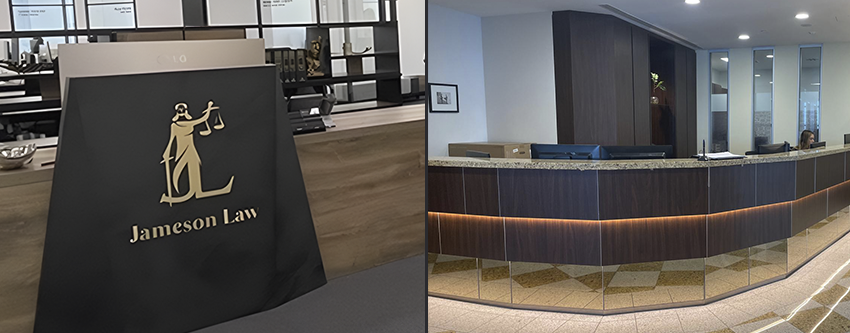Criminal law forms the backbone of Australia’s justice system, protecting society by defining what actions constitute crimes and their consequences. The principles of criminal law establish clear boundaries between acceptable and unacceptable behaviour.
We at Jameson Law see clients struggle with these complex legal concepts daily. This guide breaks down the fundamental elements that prosecutors must prove and the different types of offences you might encounter in NSW courts.
How Does Criminal Law Actually Work
Criminal law operates as the government’s primary tool for maintaining public order and safety across Australia. The Criminal Code Act 1995 (Cth) provides that most offences require a fault element such as intention, knowledge, recklessness or negligence in respect of one or more physical elements, and prosecutors must prove their case beyond reasonable doubt. This differs from civil law disputes between private parties.
The State’s Role in Criminal Prosecution
In criminal matters, the State prosecutes alleged breaches of laws that protect the community. In NSW, police prosecutors typically run summary matters in the Local Court, while the Office of the Director of Public Prosecutions (NSW) conducts more serious indictable cases in the District and Supreme Courts in accordance with its Prosecution Guidelines. Prosecution decisions reflect the public interest rather than individual victim preference.
Crown Prosecution Authority Structure
The NSW ODPP assesses serious matters and appears in higher courts, while police prosecutors appear in summary lists. This separation supports prosecutorial independence and consistency. For an overview of NSW criminal procedure, see our guide to NSW criminal court procedures and the Criminal Procedure Act 1986 (NSW).
Key Differences Between Criminal and Civil Law
Criminal law focuses on punishment and deterrence through imprisonment, fines or community-based orders, while civil law typically seeks compensation or specific performance. The burden and standard of proof differ markedly. Criminal defendants face potential loss of liberty, so procedural protections are more stringent. Safeguards such as double jeopardy and the presumption of innocence are central to the system.
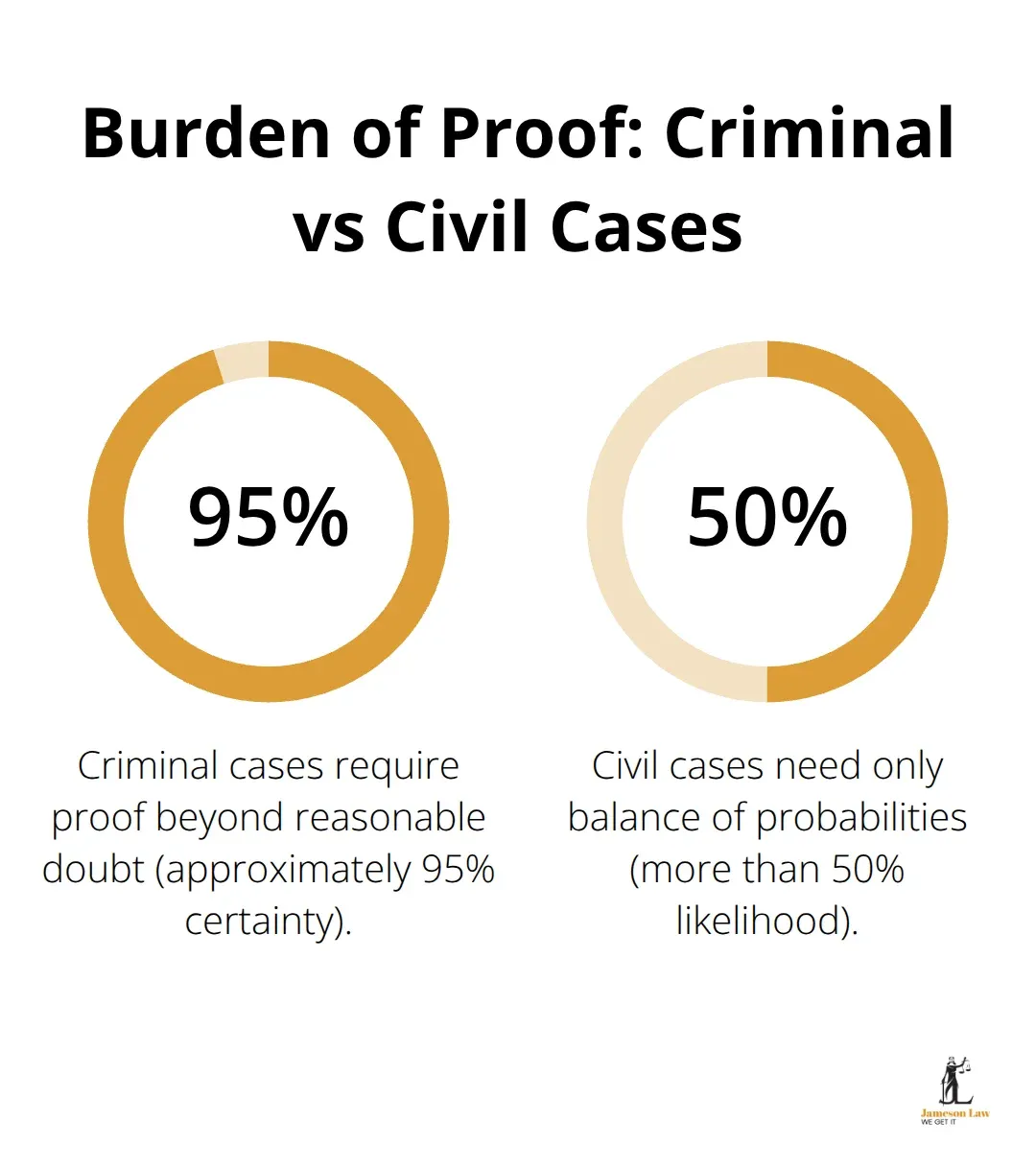
These foundations set the stage for understanding how prosecutors must establish the specific elements that constitute criminal offences.
What Must Prosecutors Actually Prove
Prosecutors must establish both the physical act and the mental state behind the alleged crime. Under s 5.6 of the Criminal Code (Cth), fault elements apply where not otherwise specified, creating a two-part analysis that the defence can test throughout the proceedings.
The Two Essential Components Courts Require
Actus reus is the prohibited conduct, which may include actions or omissions. Mens rea is the state of mind at the time of the conduct. Both must coincide for liability, except in strict liability offences where mental state is not required.
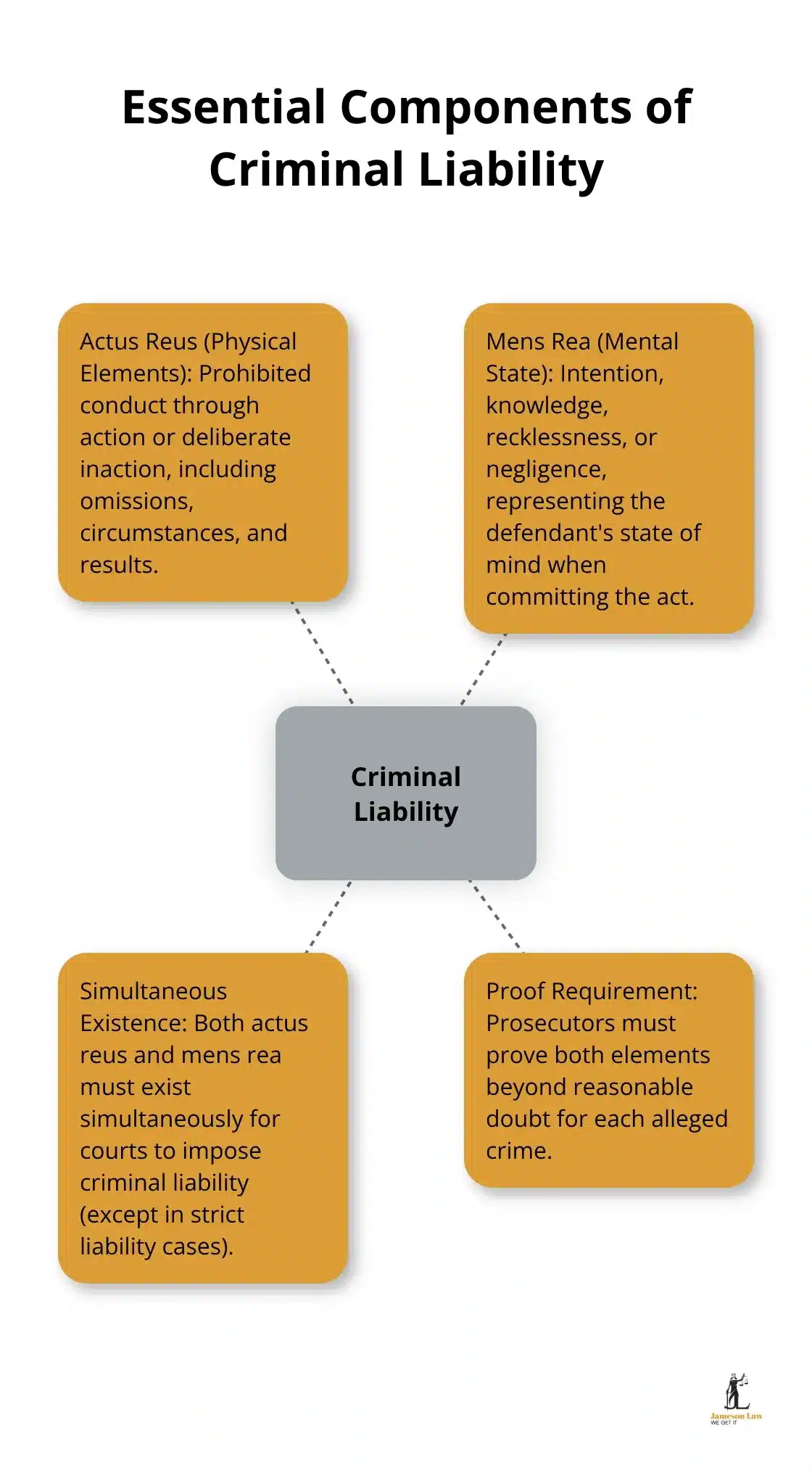
Physical Elements That Courts Examine
The physical element covers conduct, circumstances and results. Failures to act can constitute offending where a legal duty exists, such as neglect or leaving an accident scene. Physical elements may also include circumstances like consent in sexual offences or authority in dishonesty offences. Prosecutors must prove causation and each essential detail beyond reasonable doubt. See our explainer on legal causation.
Mental State Requirements and Proof Standards
Fault elements sit on a spectrum from intention to knowledge, recklessness and negligence. Intention requires proof of purpose, while knowledge relates to awareness of circumstances or likely outcomes. Recklessness concerns conscious risk-taking that departs markedly from reasonable standards. Defences such as honest and reasonable mistake of fact may be available depending on the charge and statute.
When Mental State Requirements Do Not Apply
Strict or absolute liability offences remove or limit fault elements for regulatory settings like traffic and workplace safety. Liability focuses on whether the prohibited act occurred, rather than intent. This approach also intersects with how NSW allocates matters across its courts.
Which Criminal Offences Face Which Courts in NSW
NSW allocates cases through a three-tier structure that aligns penalties and procedure with seriousness. Local Courts handle most criminal cases, including summary offences, while the District Court deals with mid-range indictable matters and the Supreme Court hears the most serious allegations. For sentencing guidance, see the Judicial Commission’s Sentencing Bench Book.
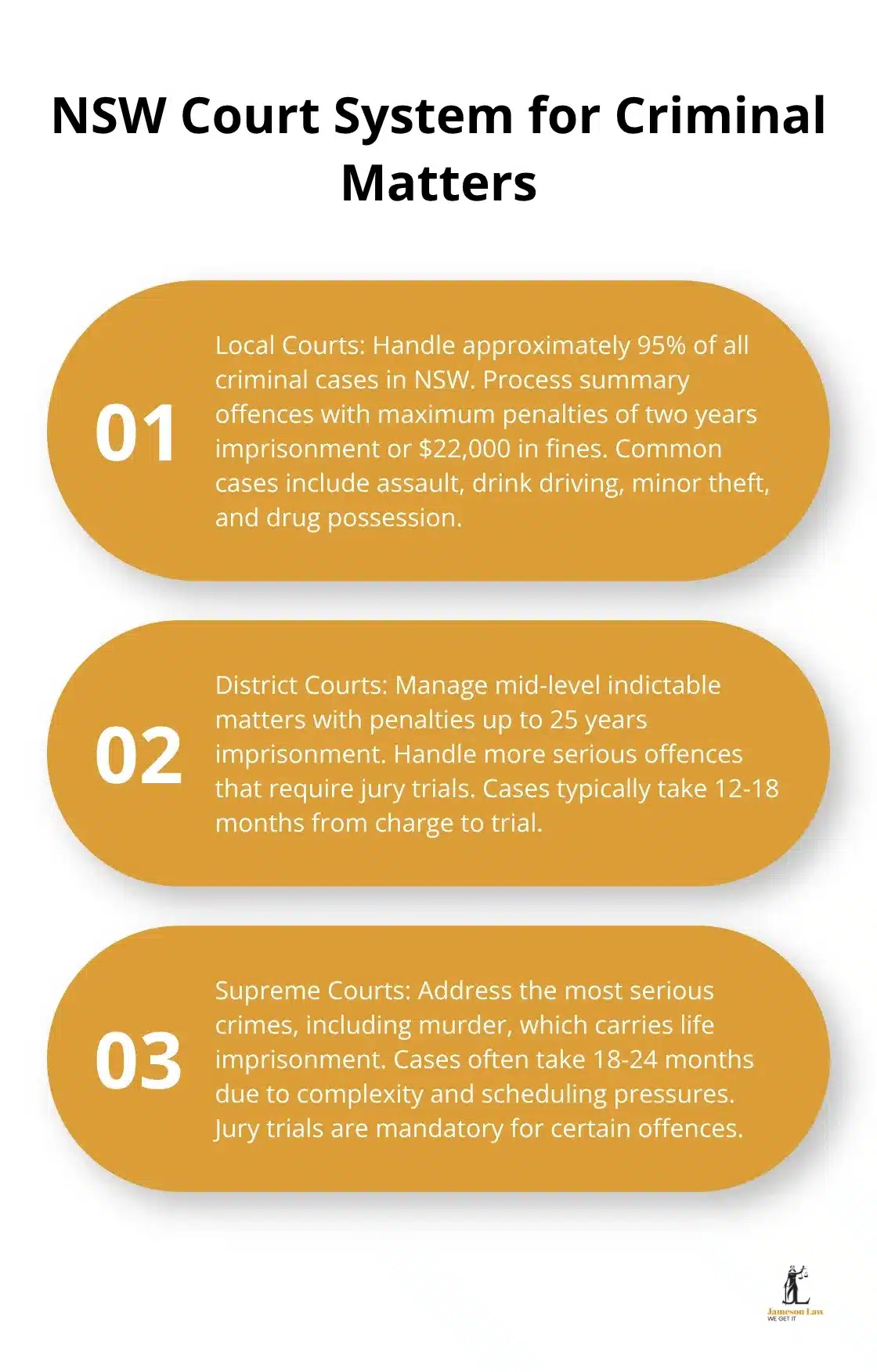
Summary Matters and Local Court Limits
Summary offences include common assault, drink driving, minor theft and drug possession. These are heard by a magistrate without a jury. Outcomes range from conditional release orders to terms of imprisonment within Local Court jurisdictional limits. Traffic matters are common. See traffic offences in NSW and penalty notice information at Revenue NSW.
Indictable Proceedings and Jury Requirements
Indictable matters generally begin in the Local Court for charge certification and case management before proceeding to the District or Supreme Court. Jury trials ordinarily involve 12 jurors who aim to reach a unanimous verdict, with majority verdicts permitted in some circumstances under the Jury Act 1977 (NSW). Timeframes vary with complexity and listing availability. For practical steps, see how to navigate a criminal law case.
Strict Liability Offences and Special Categories
Strict liability offences focus on the conduct itself rather than mental state and often relate to regulatory compliance such as workplace safety, environmental protection and certain traffic infringements. This reflects policy choices about deterrence and public safety. Guidance on compliance is available from SafeWork NSW and the NSW EPA.
Final Thoughts
The principles of criminal law protect both society and individual rights through balanced procedures. Prosecutors must prove physical elements and fault elements beyond reasonable doubt, except where Parliament has displaced fault in strict liability regimes. Your rights are safeguarded through the presumption of innocence, disclosure rules and evidence standards.
The NSW court hierarchy allocates cases by seriousness, from Local Court summary matters to indictable proceedings in the District and Supreme Courts. Criminal charges can lead to imprisonment, substantial fines and lasting records, with implications for employment and travel. Early legal intervention is critical, especially at the police interview stage and first court appearance, where strategy shapes outcomes.
Professional assistance is essential when you face any criminal allegation. We at Jameson Law provide experienced representation across NSW. For prompt advice, call (02) 8806 0866 or contact us for a confidential consultation.



